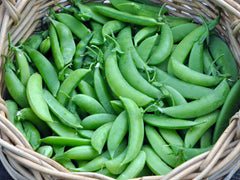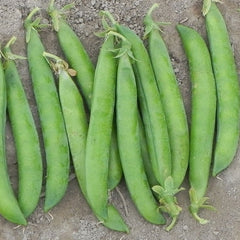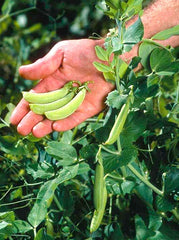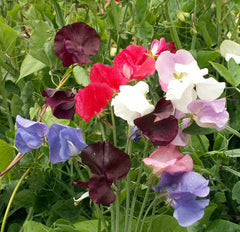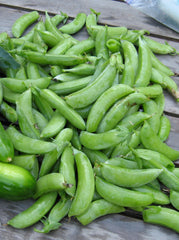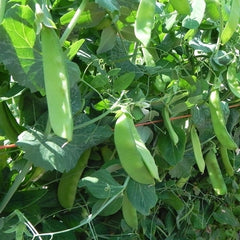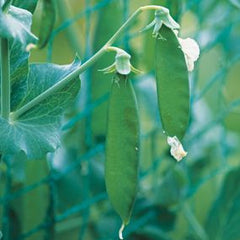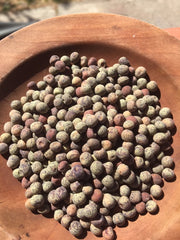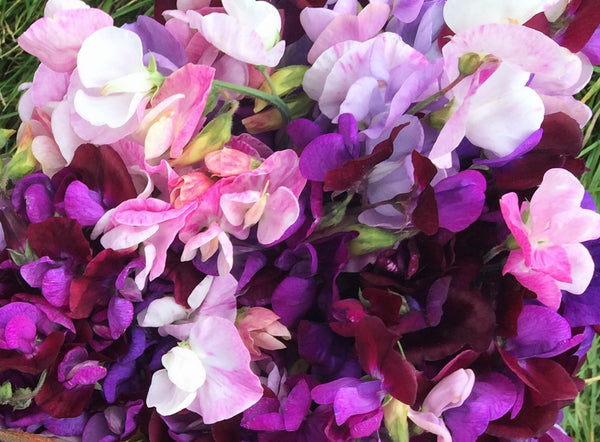Old Spice Mix sweet pea
Lathyrus odoratus
HOW TO GROW SWEET PEA
Soak seed overnight in warm water before sowing or nick with sandpaper before sowing. Direct seed, 6 weeks before last frost. Or, start indoors 4-6 weeks before planting out. Can also direct sow in early fall. Does best if started in cool conditions. Growth diminishes as the weather warms, is not tolerant of temperatures above 80˚F unless shaded. In USDA zone 7 to 9, the best time to plant is in late October to mid-November. Sow a group of 3 seeds every 6”, when 3” tall, thin to 1 every 6”. Does well in full sun, can also grow in part shade light wood land. Pinch when 6-8" tall to encourage denser branching and more flowers. Collect seed pod when flowers fade, allow pods to dry on plant. Collect to re-sow. Soil pH 7.6–7.8. Hardiness zones 4–10. Annual.
Usual seed life: 3–4 years.
Planting Depth 1”
Soil Temp. Germ. 55–65˚F (13–18˚C)
Days to Germ. 14–21 scarify
Plant Spacing 6-12”
Row Spacing 12”
Full Sun, Moist Well Drained Soil
Usual seed life: 3–4 years.
Planting Depth 1”
Soil Temp. Germ. 55–65˚F (13–18˚C)
Days to Germ. 14–21 scarify
Plant Spacing 6-12”
Row Spacing 12”
Full Sun, Moist Well Drained Soil
- 50 Seeds$4.10
These sweet pea flowers have a delicious fragrance of orange blossoms and honey. Their lavender, scarlet, pale pink, purple, rose, and cream colored blooms are a gorgeous cut flower, and pollinator attractor. They are closely related to the wild sweet pea flowers of Sicily. Deer resistant and heat resistant. Grows u...
These sweet pea flowers have a delicious fragrance of orange blossoms and honey. Their lavender, scarlet, pale pink, purple, rose, and cream colored blooms are a gorgeous cut flower, and pollinator attractor. They are closely related to the wild sweet pea flowers of Sicily. Deer resistant and heat resistant. Grows up to 6’ tall when trellised. Deadhead old flowers frequently to encourage a longer bloom season. Tags: Color: Multi-Colored, Size: Large, Specialty: Heat Resistant, Season: Spring Fall.
Henry Eckford (1823–1905), a Scottish nurseryman, cross-bred and developed the sweet pea, turning it from a rather insignificant, if sweetly scented flower, into the floral sensation of the late Victorian era.
His initial success and recognition came while serving as head gardener for the Earl of Radnor, raising new cultivars of pelargoniums and dahlias. In 1870 he went to work for one Dr. Sankey of Sandywell near Gloucester. A member of the Royal Horticultural Society, he was awarded a First Class Certificate, the top award, in 1882 for introducing the sweet pea cultivar 'Bronze Prince', marking the start of association with the flower. In 1888 he set up his development and trial fields for sweet peas in Wem in Shropshire. By 1901, he had introduced a total of 115 cultivars. Eckford was presented with the RHS Victoria Medal of Honor for his work. He died in 1906 but his work was continued, for a time, by his son John Eckford.
More recently, the association between the sweet pea, the Eckfords and Wem has been highlighted again. In the late 1980s, the Sweet Pea Society of Wem started an annual show and the town has again taken the flower to its heart. Many of the street signs now carry a sweet pea motif and an area of the town is known as Eckford Park. There is also a cultivar 'Dorothy Eckford', named after a family member.
Henry Eckford (1823–1905), a Scottish nurseryman, cross-bred and developed the sweet pea, turning it from a rather insignificant, if sweetly scented flower, into the floral sensation of the late Victorian era.
His initial success and recognition came while serving as head gardener for the Earl of Radnor, raising new cultivars of pelargoniums and dahlias. In 1870 he went to work for one Dr. Sankey of Sandywell near Gloucester. A member of the Royal Horticultural Society, he was awarded a First Class Certificate, the top award, in 1882 for introducing the sweet pea cultivar 'Bronze Prince', marking the start of association with the flower. In 1888 he set up his development and trial fields for sweet peas in Wem in Shropshire. By 1901, he had introduced a total of 115 cultivars. Eckford was presented with the RHS Victoria Medal of Honor for his work. He died in 1906 but his work was continued, for a time, by his son John Eckford.
More recently, the association between the sweet pea, the Eckfords and Wem has been highlighted again. In the late 1980s, the Sweet Pea Society of Wem started an annual show and the town has again taken the flower to its heart. Many of the street signs now carry a sweet pea motif and an area of the town is known as Eckford Park. There is also a cultivar 'Dorothy Eckford', named after a family member.
Learn More
Meet Your Farmer
We promote fair trade, organic practices and environmental responsibility throughout the Restoration Seeds supply chain. Below are the family farmers and seed suppliers who bring our open pollinated seeds to you.
Waterleaf Farm
Organically Grown
Seed grower since 2008


Growing in Oregon since 2008Waterleaf Farm is a small sustainable flower farm growing on Southern Oregon Land Conservancy (Eagle Mill Farm). Mostly a fresh cut flower farm, Melanie also grows herbs and has been saving seeds from over 30 varieties of crops for years. Waterleaf Farm also offers workshops to deepen in connection with the plants and U-pick flowers.
Reviews
